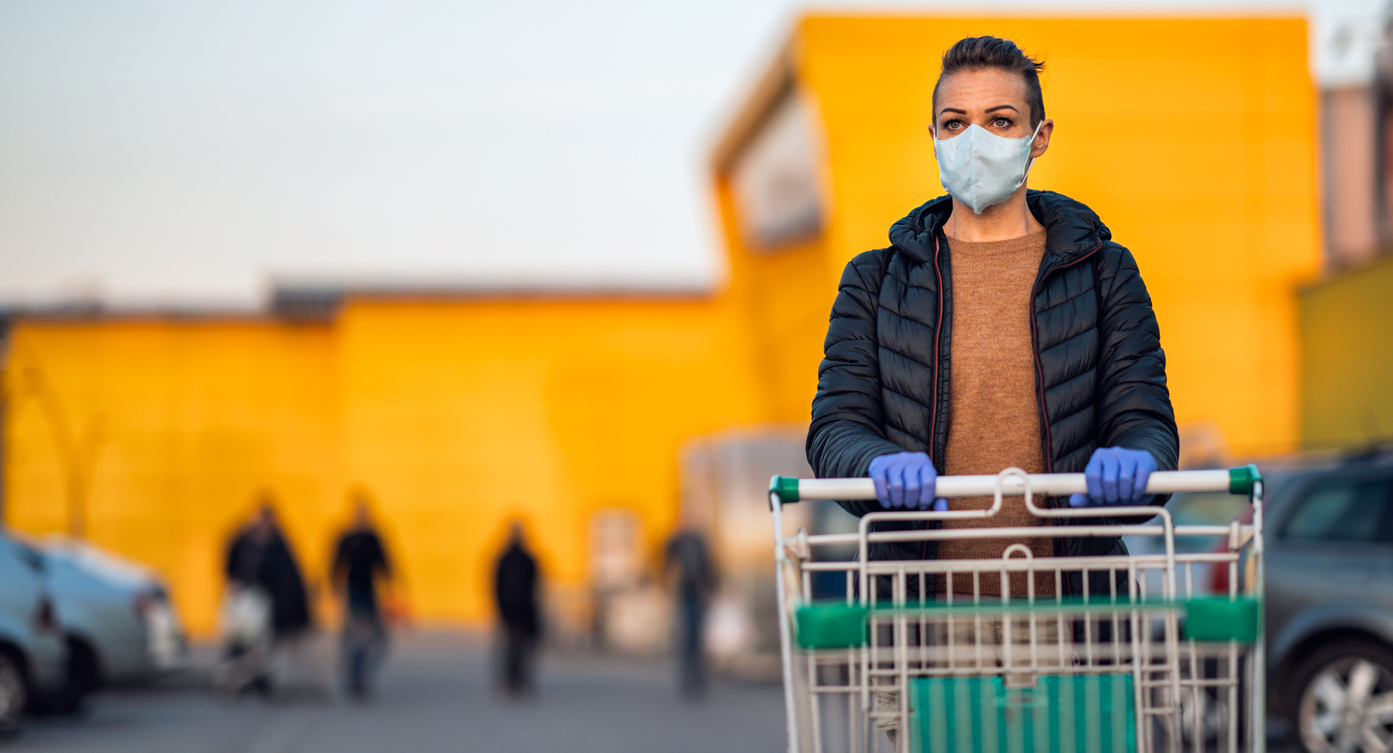We’re now several weeks into the stay-at-home quarantine policy put into effect across most of the U.S, and we’re learning more about the new coronavirus every day. New guidelines about self-protection and insights about how to further flatten the spread of the virus continue to emerge.
In light of recent studies, the CDC now recommends wearing cloth face coverings in public settings.
From the CDC:
We now know from recent studies that a significant portion of individuals with coronavirus lack symptoms (“asymptomatic”) and that even those who eventually develop symptoms (“pre-symptomatic”) can transmit the virus to others before showing symptoms. This means that the virus can spread between people interacting in close proximity—for example, speaking, coughing, or sneezing—even if those people are not exhibiting symptoms.
Asymptomatic vs. Pre-Symptomatic vs. Symptomatic
People are asymptomatic if:
They have been infected by the virus but don’t experience symptoms. These people can still spread the virus despite their lack of symptoms, and can cause symptomatic responses in other people. This is a key reason why social distancing is critical in helping to stop the spread of COVID-19.
People are pre-symptomatic if:
They have been infected by the virus and eventually develop symptoms. These people can still transmit the virus to other people before they show any signs of illness. Based on all data collected, the incubation period (meaning, the time range from when people are exposed to the virus to when they develop symptoms) is believed to be 2–14 days. This means that someone can be exposed to the virus and not show symptoms for more than a week, yet can still pass on the virus to another person even before realizing they’ve been infected.
People are symptomatic if:
They have been infected by the virus and exhibit symptoms. Symptoms of COVID-19 include shortness of breath, coughing, difficulty breathing, and fever.
The CDC now recommends cloth face coverings for everyone
Maintaining 6-feet social distancing is critical to the flattening of the COVID-19 curve. In situations where social distancing measures are difficult to maintain, such as at grocery stores or pharmacies, the CDC recommends wearing cloth face coverings. The recommended face coverings are not N-95 respirators or surgical masks, which are necessary supplies for medical first responders to COVID-19. You can make your own, fashioned out of everyday household items at a low cost.
How to Make Your Own Face Covering
Dr. Jerome Adams, U.S. Surgeon General
The CDC’s Guidelines on How to Properly Wear a Cloth Face Covering:
Cloth face coverings should:
- fit snugly but comfortably against the side of the face
- be secured with ties or ear loops
- include multiple layers of fabric
- allow for breathing without restriction
- be able to be laundered and machine dried without damage or change to shape
Additional notes:
- Cloth face coverings should not be placed on children under age 2
- They should be cleaned regularly depending on frequency of use, and can be cleaned in the washing machine
- Avoid touching your eyes, nose, and mouth when removing face coverings
- Wash hands immediately after removing your covering
- These face coverings are not a substitute for social distancing
If you have masks you’d like to donate to medical workers, visit GetUsPPE. Started by a group of doctors, this website is a resource to help provide health-care workers with important supplies such as N95 respirator masks, surgical masks, hand sanitizer, face shields and protective gowns.
For more information about cloth face coverings and guidelines on how to construct your own, visit the CDC website here. For an FAQ about face coverings from the CDC, go here.
